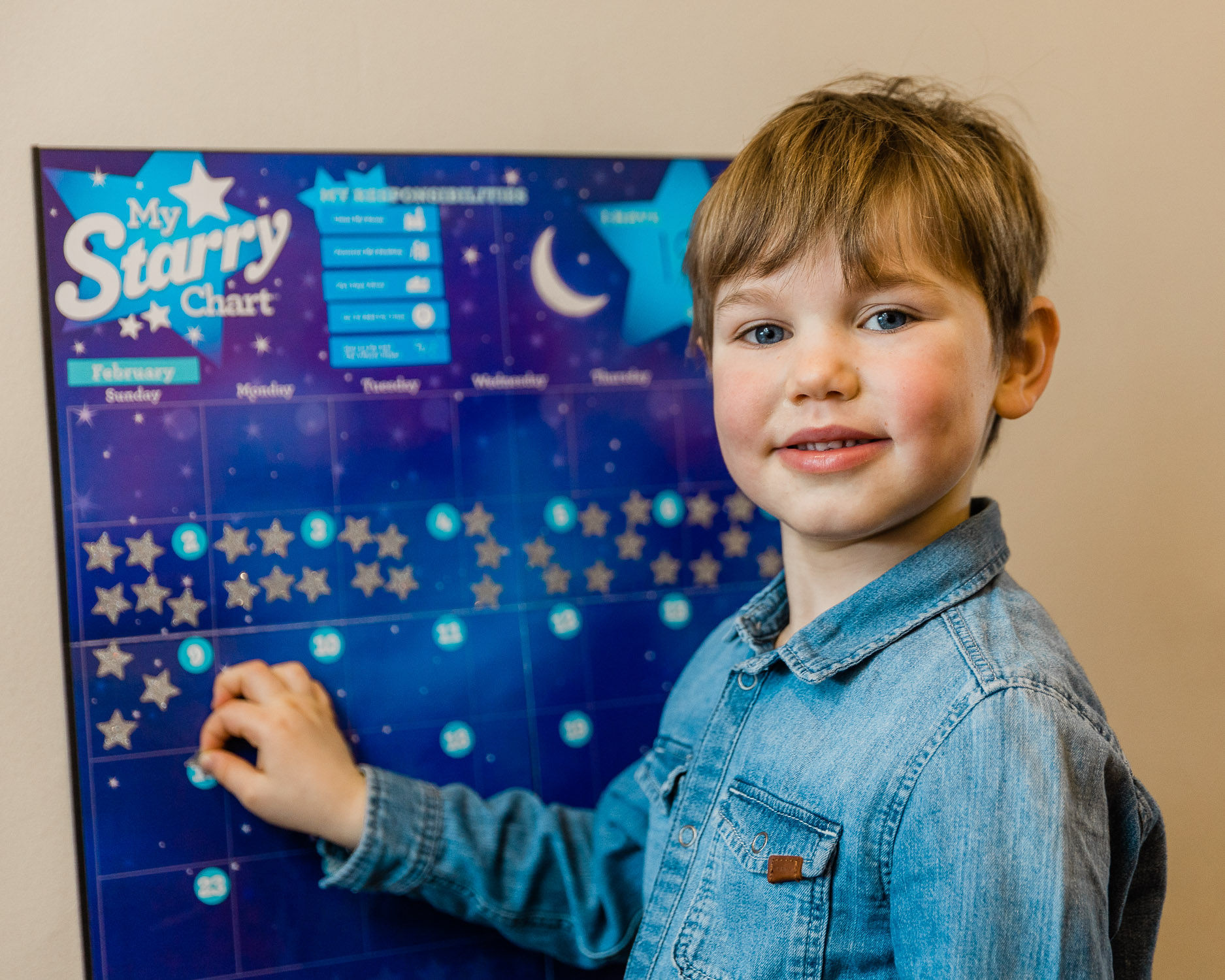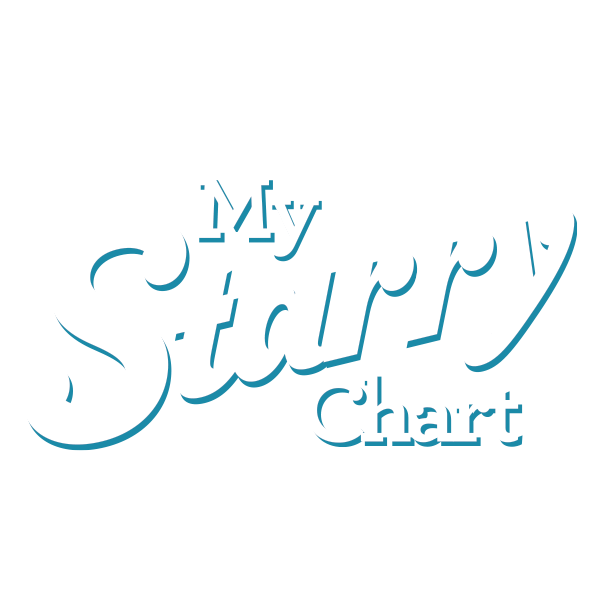
Chore charts are an excellent feedback tool to help kids get more value from doing their chores.

As parents trying to instill positive values in our children, we know parenting is an ongoing journey, with no easy fixes. A chore chart can’t automatically turn kids into responsible human beings.
However, chore charts are an excellent feedback tool to help kids get more value from doing their chores.
You can also use a chore chart to help support your child’s natural brain development and to gain crucial skills that will help them succeed later in life.
That being said, the improper use of a chore chart might condition children to focus solely on getting rewards instead of embracing responsibilities.
So what do you do? We’ll take a look at how to maximize the value of a chore chart, using stickers from our very own My Starry Chart activity set!
Chore Charts Teach Kids About Goal Setting & Planning
Setting goals and keeping track of one’s progress is an essential skill that kids need to learn. In fact, just about all aspects of life require goal-setting.
The use of a chore chart can help your kids to practice goal setting.
For example, your kids can tie an external goal such as wanting to improve their grade in a particular subject (ie. English/Language) with an activity sticker on our chore chart (ie. “Practice My Reading”).
This means you can sit with your child to determine what days they will practice reading, and how many times they will do it within a given timeframe (ie. weeks, months).
On the board, you may choose the month of March to begin reading, and put a sticker for Mondays and Wednesdays, designating them as reading days. This establishes a visual reminder for both you and your kids.
To take this further, write down separate goals such as memorizing one new line each day for a poetry reading or two new word definitions for an upcoming test.
Afterwards, put up a star for each “sub-goal” that your child completes.
You can even say that there are ten “reading goals” to complete for the month of March, each one being worth one star. This allows you and your kids to quantify their goals and track them.
Do you feel you are reinforcing good behaviour through reward-based circumstances?
A Chore Chart Can Help Kids Increase their Skill Acquisition Through Repetition
Practice makes perfect. The more your kids practice an expected responsibility or chore, the better they’re going to be. And the more they will understand owning and being accountable for that chore.
For example, let’s say you want your kids to learn to care for the house plants. Of course, caring for plants takes practice to master.
A good place to begin is getting your kids to water the plants.
If you want them to care for a few plant species at once (and have them learn a little more about botany), you could put a “Water the Plants” sticker for the month of your choice.
Next, you could pick stickers for each day you would need them to water these plants. Write separately what plants will get watered on which days.
Of course, you would have to supervise your kids as they water the plants so that they’re giving them the right amount of water. This will help them develop a sense of how frequently each plant needs to be watered.
Eventually, they might not even need to refer to the chart. Understanding that they water the plants at a designated time, weekly.
A similar effect can be achieved for other skills you want your kids to attain.
By getting them to perform a particular activity on certain days, they will get into a rhythm or repetition that supports skill acquisition.
A Chore Chart Can Help Your Child Build Emotional Intelligence
Not every activity on a chore chart for kids is a “chore” per se.
It can be a behaviour that helps kids to develop amicable qualities.
We know that you want your child to be a good listener, to be honest, and to be polite. But no child is born with such qualities. They have to cultivate them. And we as parents have to let them to do so.
Our My Starry Chart set features stickers labelled with such qualities (“Be Kind”, “Be Polite”, “Be Patient”). These stickers don’t explicitly tell you how to carry out these traits, so you and your kid have to be creative.
However, you can place them on any day (or for several days) as a reminder for your kids to display an act of kindness or patience.
That may mean helping an elderly neighbour carry groceries inside their home or allowing a sibling to grab a serving of dessert first.
Keep in mind that the purpose of these stickers is to help your kids think about how they can help others. It may seem a bit forced initially, but gradually, they will develop the habit of doing good things for others on their own and will develop their emotional intelligence.
Chore Charts are a Good Way to Reinforce Good Behaviour
Many parents struggle with how to use a chore chart. They believe it can be a good tool to help kids take ownership of responsibilities and household chores.
However, they want to avoid using it just for rewards.
Do you feel you are reinforcing good behaviour through reward-based circumstances?
A chore chart is a perfect asset to enforce more positive parenting traits.
It can enhance how you interact with your child, to condition positive change and behaviour, without direct rewards.
Focus on using a chore chart to help your kids build tangible skills that they will need as adults. This will help them improve their self-care and goal-setting abilities while taking away the emphasis on earning rewards.
